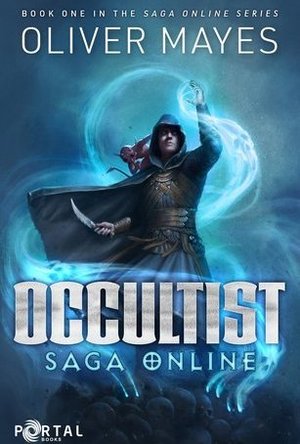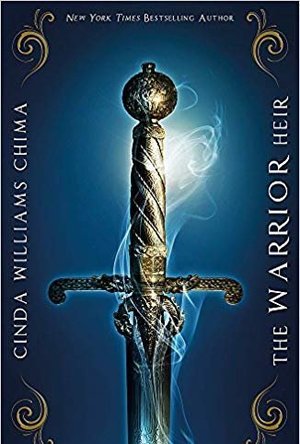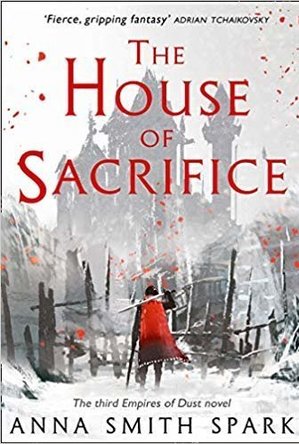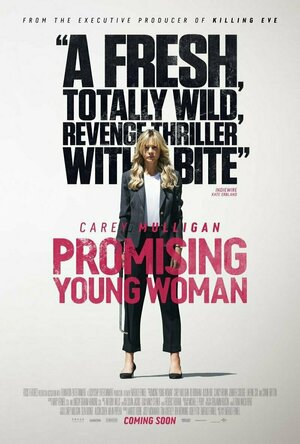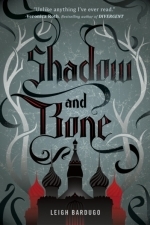Ross (3284 KP) rated The Occultist in Books
Feb 12, 2019 (Updated Feb 14, 2019)
The LitRPG genre (the best-known example being Ready Player One) is something of a narrow one. There are only a few levers to pull: the main character's real life scenario, the game mechanics, the main character's chosen "class" in-game and the conflicts therein.
The Occultist looks to mix this up a bit with the main character choosing a less traditional class, of occultist - that is, he learns the ability to summon a variety of demons and spells/abilities to use with them. This would mark The Occultist out from the crowd, if it weren't for Awaken Online already having done almost the exact same. In AO, Jason chooses a dark class and summons zombies, skeletons etc, and a large part of the early stages of this book really bear a very close resemblance to AO. We have the main character's problems at home, leading him to want to escape into the game, and to find a way to make money from his gaming hobby. The chosen in-game path is almost identical. There is an extremely strong, popular player that he wants to compete with.
From early on, I was thinking this book was a rip-off of AO. But the second half of the book is really where the book marks itself apart from AO. Whereas that book's action was focused on large scale strategy in battles, here we are scurrying around in the background picking players off one by one and there are some truly excellent action sequences, where the abilities and spells learned and the demons at Damien's disposal are used to some really creative effects. Damien looks to get some revenge on his nemesis and also to try and "level up" quickly (again, a key component of LitRPG books), and tries to pick off players as they battle other players, or take on perilous dungeons.
A lot of LitRPG books have had a very immersive gaming element, at times it was more like reading a more traditional fantasy book but where the main character was more clear what he was doing and what skills/abilities he was using. Here you are always aware the character is in a game: he "equips" clothes rather than getting dressed, there is no need for eating or sleeping, what can and can't be done, what you get from killing another character etc is so much more in line with games than in other books. This again marked it out from other books, and gave it a very different feel.
Another major selling point of The Occultist is that it doesn't mess around with time dilation (game time running at a much faster rate than real time). I don't see why so many of the other books in this genre feel the need to build this in, as it is then hard to keep it consistent, and doesn't really feel right or necessary at any time.
Also, Damien's real world troubles take more focus than in other books, as he struggles to find somewhere to live and is on the run.
While the book manages to stick to its own rules (what can and can't be done etc), there is one moment where the main character manages to do something he shouldn't be able to do (his spells have a cool down period before they can be used again and at least once this isn't observed), which was slightly frustrating given how hard the author had tried to plan out the action in line with the people involved and their skills and strengths.
My only real gripe with the book is the title of the game/series - Saga Online, which sounds less like an exciting new MMORPG, and more like the web portal for booking a pensioners' cruise!
In summary, not an original idea (but hard to have such a thing in this genre) but a superbly well told, exciting and fun read. I heartily recommend this to anyone who likes fantasy books, games like the Witcher or just anyone looking for some real fun escapism.
**✿❀ Maki ❀✿** (7 KP) rated The Warrior Heir (The Heir Chronicles, #1) in Books
May 3, 2018
You can definitely tell that this was written a few years before the short story in The Way of the Wizard. The writing isn't quite on the same level - all of the key elements are still there, but in a rawer form.
That's not a bad thing. I'm not insulting the quality of the writing, at all. It was still a very enjoyable story, and the writing and the editing were solid. And I'm happy to watch the progression of the narrative, as it gets stronger over time.
...but. If I had read The Warrior Heir before I read "The Trader and the Slave", I probably would have enjoyed this book more than I did. Part of me kept waiting for the dark, grittiness that the short story had, and it never really showed up.
Were parts of The Warrior Heir heavy? Sure. There's a lot of double-crossing, morality, and self-sacrifice in there. But it wasn't quite the same.
Sorry for that slight detour there. I felt that, before I started talking about the book itself, I should explain the factors that went towards my final rating.
Because, in general, I loved this book. It was a lot of fun to read. I loved the "world" and the magic system, I loved the history and explanations of why magic works, and where it came from. The dedication to the magic system was very nice, and much appreciated in such an action-based fantasy book.
The main characters all managed to keep me interested in what was going on (even though there wasn't nearly enough Linda and Hastings in there for me), and the antagonists walked a delicate balance of being evil, and just doing what they thought would be best for themselves, or for those around them. Even some of the protagonists walked that line, which was <i>really</i> nice to see.
Morality - it's pretty important to the story.
There weren't really any surprises in the plot department. It was incredibly easy to guess the various "twists" the book had to offer. <spoiler>Especially anything having to do with Ellen.</spoiler> But personally, I was too distracted by the world-building to overly care about how predictable things were.
Because in Maki-land, well-established magic system > plot.
Ross (3284 KP) rated House of Sacrifice in Books
Aug 14, 2019
Anna Smith Spark broke onto the scene with The Court of Broken Knives (which always annoyed me because the place in the book is named the Court of the Broken Knife), a truly dark and gritty fantasy tale mixing magic, ambition, political intrigue and good old fashion hacking limbs off with blunted swords. Her narrative tone made her debut stand out, being much more lyrical and poetic than the rest of the genre. While this took time to get used to, it added to the immersion of the story and made the reader feel like they were experiencing the conflict themselves. The lyrical prose added to the underlying story. This continued into the second book, where Marith's journey to taking over/destroying the world continued, as did the turmoil in the heart of the empire.
Here, however, the story seems to have been put on the back-burner in favour of more literary prose. A whole lot of not a lot happens. While a large chunk of this is in favour of some character development, it is laboured and a real slog. I hated the first quarter of the book, and while I could see that what little was happening would be important in telling Marith's story, it really did take forever and was so utterly rammed home that I found it frustrating. So much so that I had to put the book aside so that my mood didn't ruin my family holiday.
The book serves as something of a conclusion to the trilogy with a lot of wrongs righted and paths ended. However, so much of it is simply gratuitous war for the sake of war (which I get as part of Marith's character but I grasped that after the first couple of unnecessary towns were razed).
However, with less of import happening, the reader starts to focus on the world-building, and I certainly started to realise how little of the "magic" in the world was explained or even described. So many instances of "shadowbeasts" just appearing and I cannot remember them being introduced in any detail at all. I really couldn't remember what was so special about Marith after all.
And the ending was so much of a damp squib I just had to laugh. After everything Marith had been through, for that to be the ending was ludicrous. While I appreciated the circularity of it, I didn't like it.
A disappointing case of style over substance in this dragged out ending to a series that could easily have squeezed into two book.
BankofMarquis (1832 KP) rated Promising Young Woman (2020) in Movies
Apr 10, 2021
The answer is - it is ALL of these and thanks to a wonderful script (by Fennell), strong Direction (again, by Ferrell) and a terrific, Oscar-worthy performance in the lead role (by Carey Mulligan) it is a very effective, very powerful film.
PROMISING YOUNG WOMAN tells the tale of Cassandra who we are introduced to at a bar, obviously drunk, getting picked up (and taken advantage of) by a “nice guy” at the bar. Once back at his place, it is clear that she is NOT drunk and she confronts the “nice guy”.
To say anything else would spoil this wonderful film.
At the center of this film is Carey Mulligan (deservedly) Oscar nominated turn as Cassandra. This is a tortured soul who is looking for some sort of catharsis from a previous trauma and seeks various ways to achieve this. You see an intelligence and sadness in Cassandra at every turn and Mulligan’s performance seemed rooted in reality and was, ultimately, an effective, chillingly and (yes) sad character brought to life. It is the type of performance that I will be rooting for in the Oscar race, it’s that good.
Most of the other characters in this film fleet in and out of Cassandra’s life but all are strong performances, seemingly willing to bring their “A” game to match Mulligan’s performance and the strong script. Kudos to Jennifer Coolidge, Alison Brie, Laverne Cox, Bo Burnham, Christopher Mintz-Plasse (yes, a McLovin’ sighting!), Alfred Molina, Moly Shannon, Connie Britton and, especially, the great Clancy Brown. They all enhanced the film with their performances, working off of Mulligan effectively.
But, credit to all of this must go to Writer/Director Emerald Fennell (probably best known for playing Camilla Parker Bowles in THE CROWN) who's script is smart and thought-provoking and who’s Direction is crisp and sure. She clearly had a certain type of film in her head - the type of film that does not easily lend itself to definition/classification and packs a powerful punch at it’s conclusion. Without spoiling anything, she “ups her game” at the end of this film and I sat in thoughtful silence as the end credits ran.
Fennell is up for the Oscar for both Best Director and Best Original Screenplay and I, for one, would vote for her Screenplay hands-down.
An intriguing film that is sticking with me a few days later…always a mark of quality.
Letter Grade: A
9 Stars (out of 10) and you can take that to the Bank(ofMarquis)
Lee (2222 KP) rated Joker (2019) in Movies
Oct 6, 2019 (Updated Oct 6, 2019)
We’re in Gotham City during the early eighties. A garbage strike means that the city is currently suffering from a build up of garbage on the streets and the subsequent arrival of ‘super rats’. The rich are getting richer, the poor and the underprivileged even more so. And, at the forefront of all the wealth and power in the city is Thomas Wayne, who is currently looking to run for mayor. There is growing divide and unrest throughout Gotham, all of which serves to add fuel to the increasingly unstable mind of Arthur Fleck.
We’ve had our fair share of Joker portrayals over the decades, the most memorable of which being in 2008, and Heath Ledger’s brilliant take on the character in The Dark Knight. But Joaquin Phoenix brings a side to the Joker we’ve not experienced before - all skin and bone, abused, downtrodden, ridiculed and with a neurological condition that sees him suddenly laughing maniacally and uncontrollably, even during times of stress or sadness. Throughout the movie, we learn that Arthur also had a pretty unpleasant childhood and, for a while, you really can sympathise with him and the suffering he experiences. “I just don’t want to feel so bad any more” he says at one point.
Joker features no CGI, no costumed antics (other than the clowned kind), or any of the traditional comic book movie themes that we’re now so used to seeing. Instead, Joker treats us to something of a slow-burn character study, one mans slow descent into madness, and the birth of one of the most iconic villains of all time. Joaquin Phoenix is incredible in the role, supported by an outstanding cast, including Robert De Niro as a late night talk show host idolised by Arthur and Zazie Beets as the neighbour Arthur becomes obsessed with.
Joker isn’t exactly enjoyable in the traditional sense, uncomfortable at times and a brutally honest depiction of extreme mental health issues. But it’s beautifully shot, subtly weaving itself into the familiar DC universe while remaining unique and original. I was gripped from start to finish and I just hope that the upcoming Robert Pattison incarnation of The Batman fits into the universe and style that has been introduced here within Joker.
Becs (244 KP) rated Shadow and Bone (The Grisha #1) in Books
Aug 23, 2019
TRIGGER WARNINGS: violence, manipulation, death, blood, absent of parent(s), emotional abuse, anger issues, anxiety – panic attacks, talk of hallucinations
Review:
Firstly, I did not realize that Shadow and Bone was set in Russia or should I say – based on Russia and spun into a fantasy filled folklore novel. It starts off strong in the prologue and holds that captivating appeal throughout. I was enthralled with the whole basis of the story.
The one thing that knocked half of a star off of this review is the extremely overused trope of “the main character is ordinary and then finds out that they are extraordinary.” In Leigh Bardugo’s doing, this trope works perfectly well with the plot line of this story. But it made me really dislike the main character, Alina, quite a lot. Behind that awful trope, lies a girl who is not only strong, but shows intelligence and loyalty. Alina was also extremely relatable through her sarcastic perceptiveness but there was something else about her that I couldn’t put my finger on and found rather annoying.
The Darkling on the other hand was this morally gray character that fascinated me. For example: how he is willing to be ruthless just to pursue his goal of freeing Ravka from the Shadow Fold. His sarcasm that outwits Alina’s. His good looks and charms. I love to hate him! Plus that one scene had me heated from head to toe. If only The Darkling were real…
Overall, all of the characters were multidimensional and extremely interesting! The pacing of Shadow and Bone was done excruciating well and I was absorbed in this fantastical world of magic and war, love and mystery. Finding out more of who the Grisha truly were, kept me turning page after page. The chemistry between characters was even amazing! There was a bit of a love triangle style of trope, yet it wasn’t quite that exactly. All in all, Leigh did an excellent job with giving Alina more than one love interest but showing how vastly different feelings she feels for each.
The plot was extremely engaging and continued on, even after the climax. It enthralled the reader, calling them with a whisper that is interwoven with a dark energy, seeking to break your heart. I did not notice any spelling and/ or grammatical errors that took away from the story. I do however want to know more of not only Alina’s and Ravkas fate, but The Darklings as well.
Leigh Bardugo, why do you do cruel things to me…
“What is infinite? The universe and the greed of men.”

CariCartoon - Funny Cartoon Caricature Maker
Photo & Video and Entertainment
App
From the maker of popular My Sketch App with over ●10 Million Downloads● now bringing you...
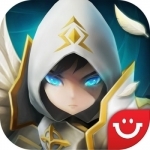
Summoners War
Games and Entertainment
App
2017 Summoners War World Arena Championship! Who will be the strongest Summoner of all? Sep. 16th...
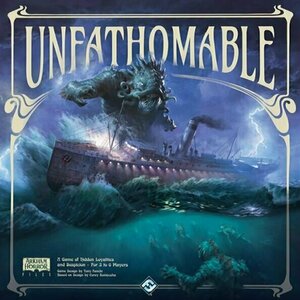
Unfathomable
Tabletop Game
The year is 1913. The steamship SS Atlantica is two days out from port on its voyage across the...
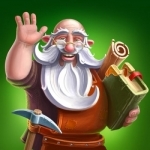
Craft The World - Pocket Edition
Games
App
50% off for a limited time! Craft The World is a unique sandbox strategy game, the mix of Dungeon...
